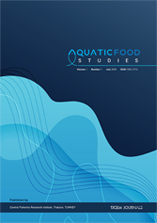Horticultural Studies (HortiS)
2024, Vol 41, Num, 3 (Pages: 090-100)
Characterization of Citrus × Poncirus Embryo Rescued Hybrids as Rootstock Candidate using Morphological Markers
2 Isparta University of Applied Sciences Faculty of Agriculture Department of Horticulture, 32200, Isparta, Türkiye DOI : 10.16882/HortiS.1528207 Viewed : 808 - Downloaded : 338 Generally, there are both nucellar and zygotic embryos in the citrus seeds after cross breeding. Since genetic variations are very important for the success of plant breeding, morphological traits of individuals are evaluated to identify diversity. The present study aimed to characterize of citrus hybrids for new rootstock genotypes based on their morphological characters at the seedling stage. A total of 335 putative interspecific hybrids, derived from 3 crosses [Common sour orange (Citrus aurantium L.) × Troyer citrange (Citrus sinensis L. × Poncirus trifoliata L.), Common mandarin (Citrus deliciosa Ten.) × Troyer citrange (Citrus sinensis L. × Poncirus trifoliata L.) and King mandarin (Citrus nobilis L.) × Carrizo citrange (Citrus sinensis L. × Poncirus trifoliata L.)], were observed by their plant morphology. The eight qualitative and five quantitative characteristics of hybrid plants such as seedling growth, leaf and thorniness characteristics were evaluated. The average plant height of the population was found between 70.2 cm and 133.2 cm. The average stem diameter varied between 5.9 mm and 8.0 mm. Hybrid seedlings were separated on the basis of dominant trifoliate leaf marker. There was wide diversity among the accessions with respect to quantitative leaf characters. In terms of leaf division, 268 genotypes have bifoliate and 67 were trifoliate in all combinations, and many intermediate forms were also observed. In addition 66 of the genotypes were thornless while 269 of the genotypes were thorny. The genotype No. 4, has been assessed as triploid, from Common mandarin × Troyer citrange combination, has the longest and dense spines. Morphological markers data were analyzed by clustering method to compare similarities of hybrids. The dissimilarity index was observed between 0.004 and 17.318 within three hybridization combinations. The hybrids obtained at 110 days after pollination were more distant relative to each other in all hybridization combination. Keywords : Cross breeding Leaf division Morphology Seedling Troyer














